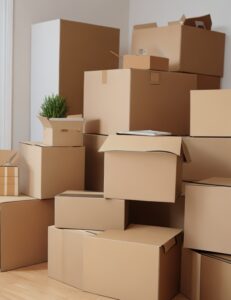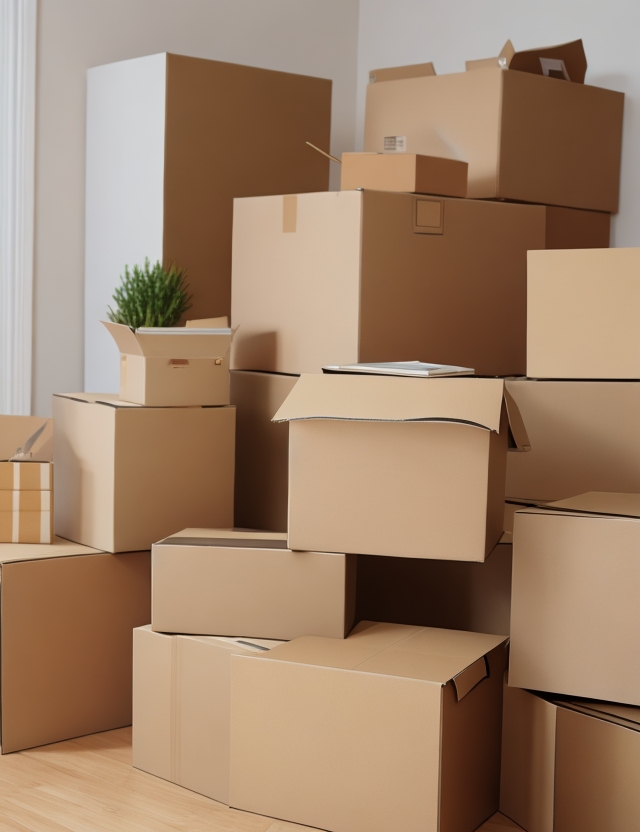Expert Packing Tips for a Stress-Free Moving Experience
Moving can be an adventure. But the process of bringing your entire life together can be intimidating. With the right strategies and a bit of planning, you can make the packing process smooth and stress-free.
Before starting the physical act of packing, take some time to plan your approach. Create a packing timeline that covers several weeks leading up to your move. Break down the tasks into smaller, manageable steps, and assign deadlines for each. Begin packing non-essential items early, leaving only the essentials for the final days. This approach not only minimizes stress but also ensures that you pack in a systematic manner.
Investing in sturdy and reliable packing supplies is a must. Stock up on sturdy boxes, bubble wrap, packing tape, markers, and packing paper. Don’t skimp on these supplies – they’ll save you a lot of headaches in the long run. It’s better to have a surplus than to run out mid-packing. Abd don’t forget using subpar materials can lead to damaged belongings, and that’s the last thing you want during a move.

Efficient Labeling
Labeling is the most important part of organized packaging. If you don’t, you’ll find yourself surrounded by a sea of unmarked boxes after you move in. To avoid this chaos, start labeling boxes as soon as you begin packing. Make it a habit to include a brief description of the box’s contents along with the room it belongs to. This simple step will save you time and frustration during the unpacking phase, allowing you to prioritize which boxes to open first.
As you place items into boxes, take a moment to jot down what’s inside and where it belongs. It’s easier to label as you go than to decipher a puzzle of unmarked boxes later.
Each box deserves its own mini description. Just a few keywords will do the trick. “Kitchen Utensils,” “Living Room Decor,” or “Bedroom Linens” provide a clear snapshot of the box’s contents.
Tackle packing room by room to maintain order and stay organized. This approach helps you focus on one area at a time, preventing items from getting mixed up. Pack similar items together to reduce confusion when unpacking.
Color coding can be your secret weapon. Assign a specific color to each room, and use colored markers or stickers to mark boxes accordingly. This visual cue will make it a breeze for movers and helpers to swiftly transport boxes to the right rooms.
Pack a separate box labeled “Essentials” with items you’ll need right away in your new place. Like toothbrushes, chargers, and that trusty coffee mug. Labeling this box with neon colors or bold letters ensures it doesn’t get lost.
Protect Fragile Items with Care
Fragile items are often a concern when packing, but with careful preparation, you can ensure they arrive safely in your new home. Wrap delicate items individually, using generous layers of bubble wrap or packing paper. Place them snugly in boxes, filling any empty spaces with foam peanuts to prevent shifting during transit.
Dishes, glasses, and other breakables should be packed vertically to reduce the risk of breakage. Reinforce the bottom of boxes with extra packing tape and clearly mark them as “Fragile” to alert movers to handle them with care. Consider using clothing, towels, or linens as cushioning layers between fragile items.
It all starts with the right supplies. Before you even think about wrapping, make sure you have sturdy cardboard boxes, bubble wrap, packing paper, and foam peanuts on hand. This not only adds an extra layer of protection but also saves space.
Take photos or videos of valuable items before packing them. This serves as documentation for insurance purposes in case any items are damaged during the move. It can help you keep track of your possessions and their condition.
Maximizing Space
Consider disassembling larger furniture pieces. This not only makes them easier to transport but also creates more space within your moving boxes. Tables, bed frames, and bookshelves can often be taken apart, helping you optimize your space usage.
Leave your clothes in the drawers and closets and use garbage bags to cover hanging clothes. This not only protects them from dust and damage but also maximizes space by keeping them compressed.
For smaller items, buy vacuum-sealed bags. They can compress bulky bedding, pillows, and clothing, freeing up substantial space in your boxes. Distribute the weight of items evenly within each box. Heavy items like books should go in smaller boxes to prevent them from becoming unwieldy. Lighter items can fill larger boxes without putting too much strain on the box itself.
When placing items into a box, fill every available gap and crevice. Small items can fit snugly into nooks left by larger ones. The goal is to minimize empty spaces, making the most of each box.
For complex electronic setups or intricate furniture assembly, take photos before disassembling. These visual references will be a lifesaver when you’re trying to reassemble things at your new place.
Use zip ties or cable organizers to bundle cables together and label them to match the devices they belong to. For small parts, like screws from disassembled furniture, place them in labeled bags and tape them to the item they belong to.
Moving doesn’t have to be a stressful endeavor. By following these expert packing tips, you’ll not only ensure the safety of your belongings but also make the unpacking process at your new home much smoother. From clever labeling and careful protection of fragile items to maximizing space and simplifying the essentials, these techniques will help you conquer the packing process and look forward to a stress-free transition to your new abode.
Other posts
© 2025 Local Movers. All rights reserved.
